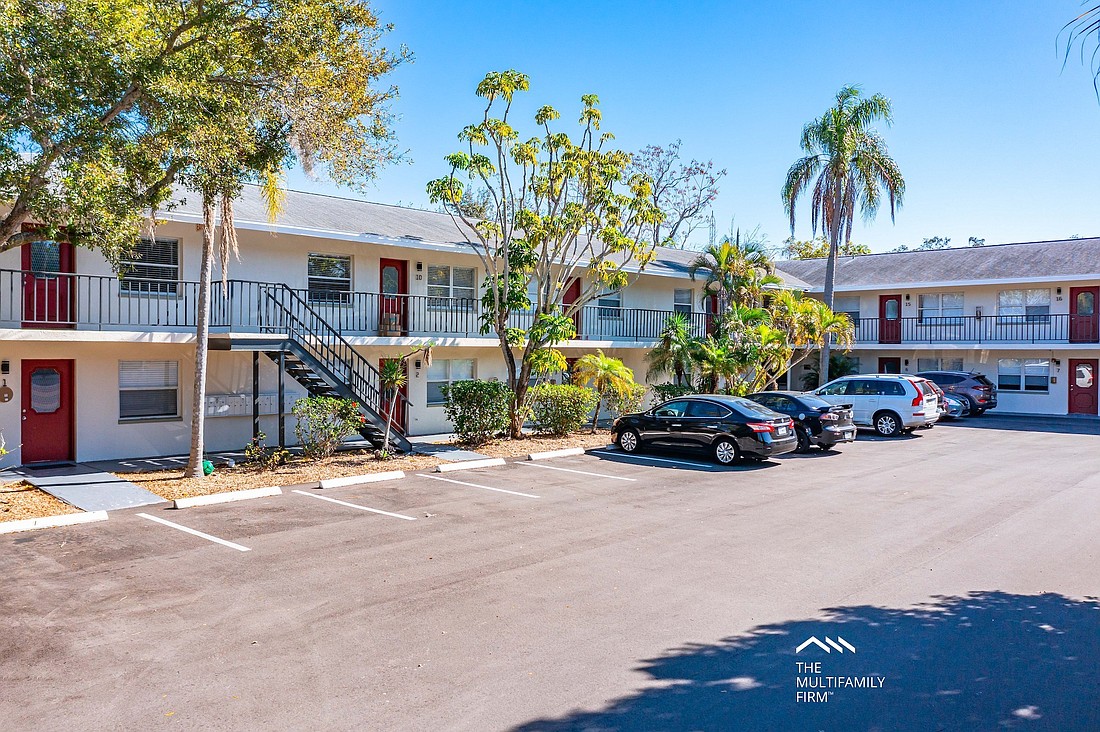- May 6, 2024
-
-
Loading

Loading

Apartments are still in high demand across Florida as supply remains short, leaving renters searching for scarce opportunities amid escalating prices. Florida is one of six states, according to a report by multifamily investment software provider Stessa, that have seen rents increase by 20%-25% since 2019, the highest in the nation.
Nowhere is that more evident than in the North Port-Sarasota-Bradenton metro, which has seen an increase in median rent of 16.9% over the past two years, according to the data.
Median rent for a one-bedroom apartment in the region, according to the report, rose from $1,373 to $1,605 since 2019, a gain of 16.9%, ranking the market 25th among the nation’s mid-size metropolitan statistical areas. Still, the local region ranked behind four other similar size Florida areas.
Cape Coral-Fort Myers is ranked 17th at 20.4% rent growth, Palm Bay-Melbourne-Titusville 18th at 19.1%, Lakeland-Winter Haven 21st at 17.5% and Naples-Marco Island 24th at 17.0%
Luxury apartment rents are well above $2,000 for one-bedroom units and more than $3,000 for two-bedroom units, but nowhere is the squeeze felt more than in what would have previously been classified as “affordable” apartments, the smaller complexes built in the 1960s to 1990s.
Mathieu Rosinsky, principal of Belmont Associates, which owns multifamily and retail properties in West Palm Beach and Sarasota counties, said that from an investment standpoint, the Sarasota apartment market is among strongest in the U.S.
“Sarasota has probably outpaced Palm Beach County, and Palm Beach County is really hot right now,” Rosinsky said. “I believe the Sarasota market is probably the among strongest one in the country, certainly one of the strongest in Florida based on the comparison I have to the East Coast.”
Belmont Associates specializes in Class C apartments, those more than 20 years old and typically in areas where lower rents are the norm. Even there, Rosinsky said market pressures are forcing rents upward as demand squeezes landlords having to invest more heavily in improvements to keep units occupied. Investors’ costs are also rising as interest rates rise and the cost to acquire the asset class in hot markets is at an all-time high.
“A year ago at this time, the rents were around $1,200 a month on average for my West Coast properties. Now, for renewals and new leases we’re at $2,000,” Rosinsky said. “I do expect there to be a slowdown at some point. This is not something that can last forever. There's a tremendous demand and a shortage of multifamily, especially in the affordable housing category.”
As hot as the rental market is, the business of buying multifamily property is even hotter. Phil Ginexi, a partner with The Multifamily Firm, which brokers properties from Hernando County to Fort Myers, calls it “absolutely insane.”
“We’re seeing record sale prices on a per-unit basis and certainly on a compressed cap rate basis as well,” said Ginexi, who is based in Sarasota and markets properties south of the Sunshine Skyway Bridge. “That's pretty much been the story since midway through 2021. I think where it really started was when interest rates were starting to creep up. We heard a lot of rumbling about it, but it hasn’t taken an immediate effect on the market.
“I think it certainly it will at some point but, supply is still pretty low the rental market. I'm not really seeing any kind of decrease in buyers.”
Rosinsky said he regularly receives unsolicited inquiries from brokers and investors for his multiple Sarasota County properties, validating Ginexi’s point. Multifamily has long been a preferred commercial property asset class because of its perpetual customer base and virtually assured stable return on investment.
“Everyone needs a place to live,” Rosinsky said.
Until now, the typical multifamily buyer would acquire an existing property, invest in renovations and updates, hold it for four or five years, then sell it for a profit to an investor who would start the cycle over again.
Those days, at least for now in desirable markets, are gone.
Like Belmont Associates, The Multifamily Firm specializes in Class C apartment complexes. Prior to 2020, Ginexi said prices for such properties generally were in the range of $150,000 a unit. Those have since exceeded $200,000 a unit, but some now — depending on location, condition and other factors — are cresting $250,000 a unit.
That increased cost is passed on to the renter, who with few other options is willing to pay.
There may be some relief in sight, though. According to apartment guide website apartmentlist.com, rents in the Sarasota-Bradenton area slipped 1.9% in April, compared to a 0.9% increase nationally.
Even at that, year-over-year rent growth in the metropolitan statistical area is 41.3%, compared to 4.4% at this time last year. Overall, rents are up 46.9% since March 2020.
Rosinsky said he hasn’t experienced any rent reductions. If rents did decline, Ginexi said, it could be a slight trend toward the pre-pandemic seasonal norms, observing fewer seasonal residents staying in the area past March than in the previous two years as restrictions are eased elsewhere.
The continued influx of new permanent residents, Ginexi projects, will sustain multifamily investment for the time being, although inflationary and interest rate pressures complicate the equation.
“We’re in uncharted territory in valuing these properties because for so long you could push value based on your pro forma projections,” he said. “But if that starts to soften, you have up to soften up your projections a little bit. I don't really know what's going to happen. We're just trying to take it day by day, week by week band see what happens, but as long as people keep moving here and want to live here, I would say that it will stay healthy.”